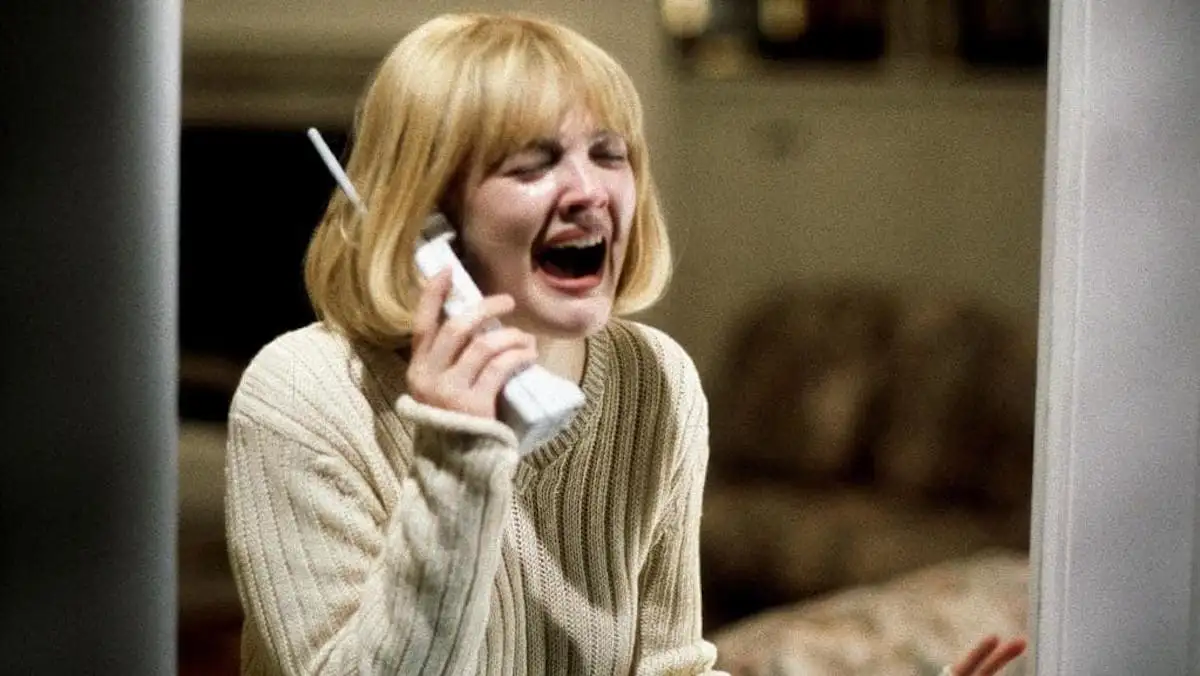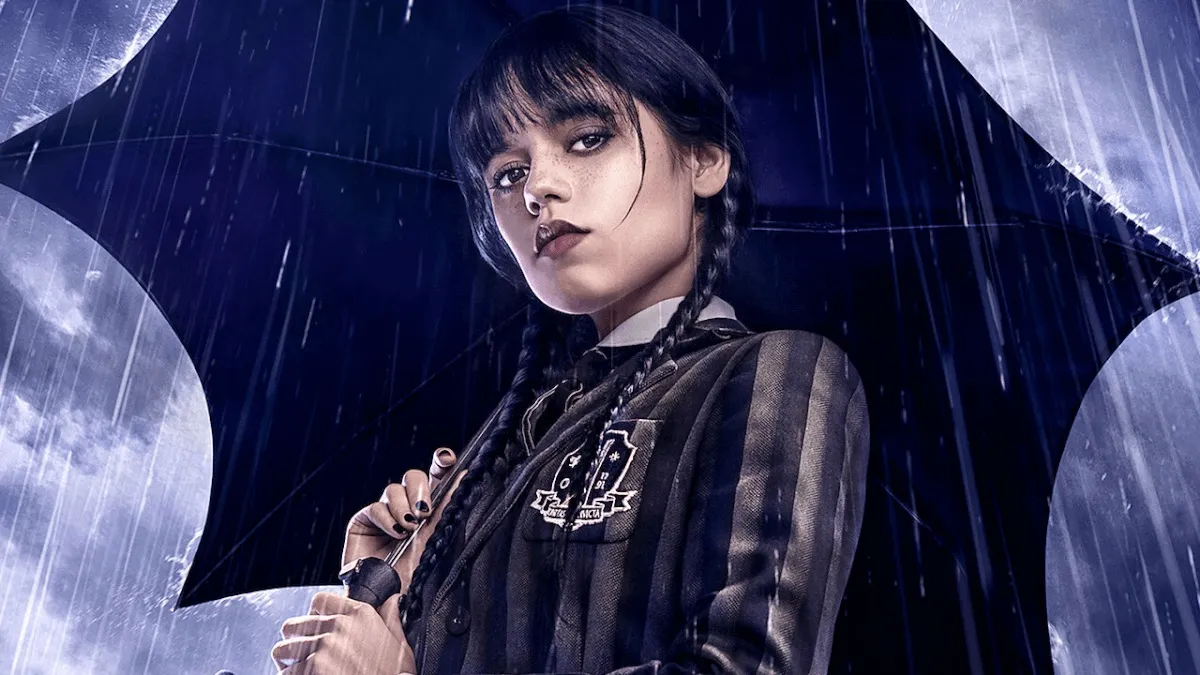Horror is about all kinds of trauma, and Wes Craven’s Scream franchise is no exception. The four-film series follows Sydney Prescott (Neve Campbell) and Gale Weathers (Courtney Cox) as they deal with serial killers hell bent on creating their own scary movies. Beloved by fans, the films might be the essential sendup of the slasher genre, that also serve as a fascinating exploration of trauma and the way that the world can commodify the pain women go through.
As we approach Halloween this year, we’re going to take a look at the way each of these films explores the concept of feminine pain and trauma, and why the films hold up today. In part inspired by the resurgence of love for Scream 4 and the franchise, we’re breaking down why these films have endured and why Sydney and Gale have become such key figures in the horror canon. Grab your mask, make some popcorn, and let’s break down why the first Scream is an almost perfect horror film.
As a heads up, we’ll be delving into spoiler territory here, so abandon all hope ye who read this piece.
The movie’s opening scene centers on Casey (Drew Barrymore) as she is tormented, stalked, and ultimately murdered by the killer. We later find out that one of the killers is Stu (Matthew Lillard), who Casey dumped before the events of the film. With the real-life epidemic of violence against women who reject men, it’s hard not to see this scene as being a sign of how violent men will lash out at women who they feel slighted by. Casey, who has no real connection to the plot, dies because of her rejection of Stu. While this is never explicitly outlined in the film, it’s a fair reading of the text and makes Casey’s death even more tragic and painful.
Similarly, Stu and other killer, Billy (Skeet Ulrich), rape and murder Sidney’s mother a year before the film takes place. Billy blames Sydney’s mother for having an affair with his father, resulting in his mother leaving the family. Again, a woman is murdered because of two men who feel that she’s caused them hurt. Maureen Prescott was not the one to blame for Billy’s family falling apart, and yet she is the one who takes the blame.
When we meet Sidney, she’s grieving the loss of her mother, which Billy exploits both as the killer and as her boyfriend. As the masked murderer, he taunts her over blaming an innocent man for her mother’s death. As her boyfriend, he gaslights her and pressures her into sex, sneering that their relationship is “edited for TV” after Maureen’s death. She’s shut down as people question her sanity and imply her pain has driven her to murder.
Sidney’s pain isn’t respected by Billy. Not only is he the reason for it, but his constant pressuring is a sure sign of cruelty and not caring, even if he hadn’t been the killer. Sidney feels like she should have sex with him because he’s been patient, even as her female friend Tatum assures her that intimacy issues following her mother’s death make sense. His treatment of her is gross, and Sidney ultimately getting to murder the guy who abused her and murdered her mother makes his eventual death even sweeter.
On the opposite side of the coin, Gale, a reporter, covered Maureen’s death and the ensuing trial. She turned Maureen’s death into a chance for her career to take off, insisting that accused Cotton Weary (Liev Schreiber) is innocent. While Gale is right, she also turned the case into a chance for her to score a book deal. Even her involvement in the Woodsboro murders is based around commodifying the suffering of those around her.
And yet, Gale isn’t a villain here. She’s portrayed as a careerist, and definitely an antagonist to Sidney, but she’s not the ultimate villain, and instead is a hero, helping to take down Billy and Stu. Making a living off murder isn’t as terrible a crime as murder, but it still implies an ambitious side and the monetary value of commodifying crime and female trauma. Audiences will pay to hear about murders, real or not, and as the audience is paying to watch a horror movie about teens being slaughtered, we can’t afford to take the moral high ground.
And yet, the film doesn’t try to paint Billy or Stu as being inspired by the movies, though they do love referencing scary movies whenever they get the chance. There’s no moralizing that these movies can actually impact real world events. “Oh Sid, don’t blame the movies…Movies don’t create psychos. Movies just make psychos more creative,” Billy says towards the end, verbalizing this point. The film smartly avoids making Billy and Stu copycat killers, but rather angry men who think the world owes them something and that they can kill who they want to get revenge for slights.
And that’s the scariest thing of all, isn’t it? Michael from Halloween is a senseless Boogeyman, Freddy Krueger lives in your dreams, and Jason is very much a supernatural villain. Billy and Stu? They seem like they could be out there, walking down the street. Wes Craven might not have set out to make a horror film about the dangers of angry, disaffected men, but he sure as hell made one, because Billy and Stu sound like they’d be Reddit and 4chan dwellers if they were alive today.
Throughout the Scream franchise, Sidney and Gale, and the others around them, explore different forms of trauma, and the way that the world reacts to female trauma in particular. This first film sets up both Sidney and Gale as fascinating studies of what trauma can do to a person and also serves as a painfully real reminder of the dangers of angry men who feel rejected. Even if this wasn’t Craven’s intention, it still works as a reading of the film and it makes it even scarier.
Tune in next week for a discussion of Scream 2 and how Sidney and Gale both deal with the commodification of the events of the first film.
(image: Dimension Films)
Want more stories like this? Become a subscriber and support the site!
—The Mary Sue has a strict comment policy that forbids, but is not limited to, personal insults toward anyone, hate speech, and trolling.—









Published: Sep 27, 2019 05:25 pm